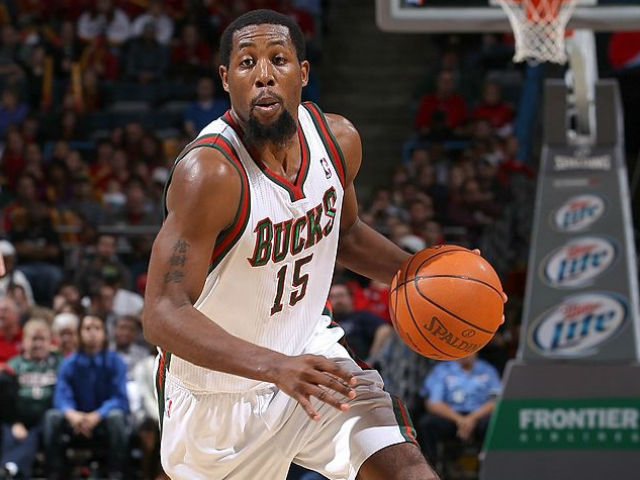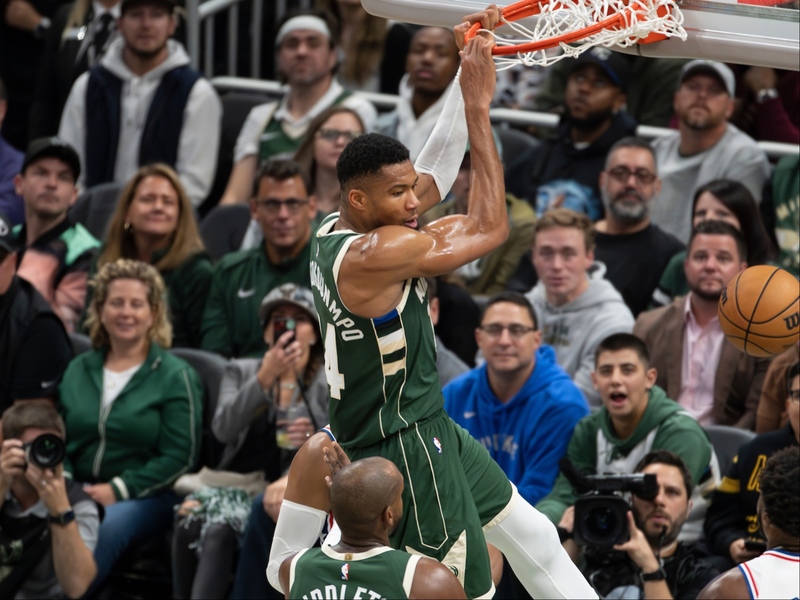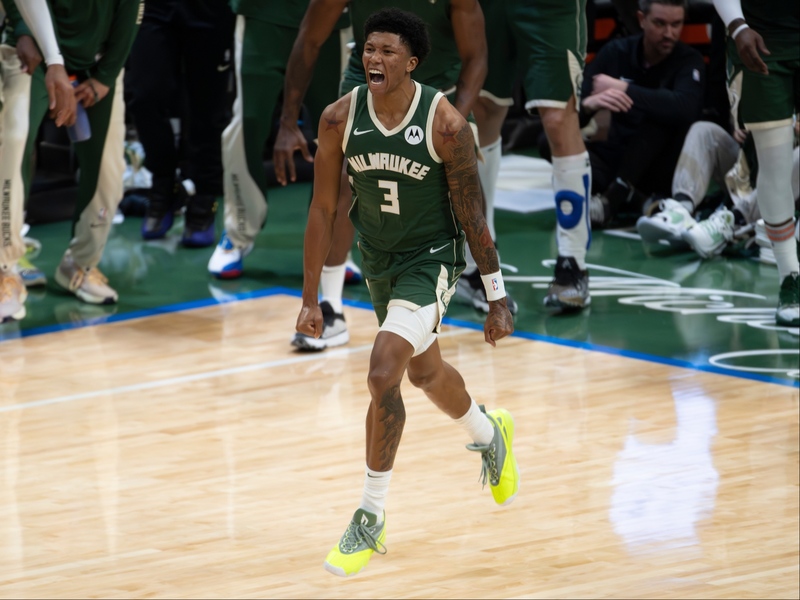Let’s get this out of the way right off the top: The Bucks signing free agent Dwyane Wade would’ve been a great bit of terrific fun for Milwaukee basketball fans and maybe even good for the team, too.
Having said that, it probably would’ve been the wrong move for healthy roster construction. And it surely would’ve been the wrong move for the team’s oft-stated and on-message mission to #OwnTheFuture and be competing for a championship in 2018, when the new arena opens.
On Tuesday, the pie-in-the-sky hopes for a return to Brew City of the former Marquette star and beloved NBA player came crashing down, as news emerged that Wade had canceled his meeting with the Bucks and is reportedly seeking a two-year, $50 million contract. That’s a lot, even with the league’s insane new salary cap – Kevin Durant’s deal was two years, $54.5 million – and the Bucks have other needs, looming extensions and insufficient space for what Wade wants.
Disregarding the notion that his apparent interest in the Bucks may have been merely part of a power-play tactic to gain negotiating leverage with the Heat, by whom he feels slighted – take heart, Milwaukee; we’ve now at least reached credible-threat-city level! – the 34-year-old guard’s age, injury history, declining athleticism and demonstrably reduced production would have made it a bad signing.
And Bucks fans know all about bad signings. From Tim Thomas to Michael Redd to Dan Gadzuric to Bobby Simmons, and many, many more, Milwaukee’s had a somewhat tortured history – especially recently – in free agency. And we’re not even going to be talking about those guys. We’re talking about players in similar circumstances as Wade and Bucks squads in similar positions as this one – past-their-prime starters brought in to put a solid team over the top.
But, you say, he’s a future Hall of Famer who showed last season he still has plenty of ability and would help the young Bucks not only on the court but also in the locker room, improving leadership and chemistry and their collective Snapchat game. He’s loads better than the scrubs below, so there’s no comparison! And to that, solemn head nod. We ask that you look not at the names, but instead at the trends, of the past results of signing over-the-hill and debilitated free agents to multiyear contracts, expecting them to dramatically improve a team.
Wade’s player efficiency rating has dropped every season since 2011-12, when he was 29 years old, from 26.4 to 24.0 to 22.1 to 21.4 to 20.4. In two years, that decline projects to about an 18.0 PER, which was Tyreke Evans last season. He’s never played a full NBA season and missed an average of 20 games each year since 2011-12. We all love Dwyane Wade, but not 2016 Wade – not even for 2016 money.
Those who fail to learn from history are doomed to repeat it. Have the Bucks learned from their history? They have new owners, new decision-makers, a new coach, new players, new direction and a new mantra. They can’t still have an old make-a-splash approach to free agency. Here are five free agents Milwaukee signed that should serve as a reminder of the perils of giving out contracts to old veterans just to turn heads (all statistics via Basketball-Reference.com).
1. Moses Malone

In 1991, the Bucks signed 36-year-old big man Moses Malone to a two-year, $3.8 million contract. The future Hall of Famer was signed with the understanding that he was well past his expiration date, though he still gave Milwaukee one good season. In 93 games from 1991-92 to 1992-93, Malone averaged 14.3 points and 4.2 rebounds and had a combined PER of 18.9, down substantially from his career marks of 20.3, 12.3 and 22.0. The Bucks had a 48-34 record (.585 winning percentage) the year before they signed Malone to give them a veteran presence, but went just 59-105 (.360) over the two seasons he was in Milwaukee. Malone retired in 1995.
2. Armen Gilliam

In 1996, Milwaukee inked Armen Gilliam, a well-respected power forward whose best seasons were behind him but was still considered a solid player, to a four-year deal worth about $14 million. The 32-year-old averaged 13.7 points, 6.9 rebounds and had a 16.4 PER for his career, but in 196 games over three seasons with the Bucks, those numbers dropped to 9.7, 5.4 and 15.3. After going 25-57 (.305) in 1995-96, Milwaukee went a combined 97-117 (.453) from 1996-97 through 1998-99 after signing Gilliam – a slight improvement not aided much by the broken-down big man. In 1999, the Bucks traded him, and Gilliam retired in 2000.
3. Anthony Mason

Oof, this one hurt. Coming off a season in which they came within one game of reaching the NBA Finals, the Bucks brought in bruising Knicks forward Anthony Mason to give them an edge and hopefully make them a championship contender. Milwaukee signed Mason, at 35 in 2001, to a $21 million contract over four years; the unpopular player would participate in only two of them. His 8.5 points, 7.2 rebounds and 12.1 PER from 2001-02 to 2002-03 fell from his career averages of 10.9, 8.3 and 14.6, and the Bucks regressed from 52-30 (.634) the year prior to 83-81 (.506) in Mason’s two seasons. He was waived in 2003 and retired after not being able to find another team.
4. John Salmons

Another situation of the Bucks trying to keep the momentum going following a promising campaign. Milwaukee acquired John Salmons from Chicago at the trade deadline in early 2010, and with him averaging almost 20 points per game down the stretch, the team went 46-36 and made the playoffs as the No. 6 seed. Sensing his high value, Salmons opted out of the final year of his contract, became a free agent, and then re-signed with the Bucks – at the age of 31 – for five years and $39 million. Over 73 games in 2010-11, the only season he’d play in Milwaukee under his new deal, the swingman averaged 14.0 points, 3.6 rebounds and had a 12.8 PER. While those numbers were up from his career marks of 9.3, 2.9 and 12.1, the Bucks fell to 35-47 and traded Salmons in the summer of 2011. The team wouldn’t get back to the postseason for another three years.
5. Drew Gooden

Like Salmons, Drew Gooden was signed to make what appeared to be a good 2009-10 squad even better. The Bucks gave the goofy, goateed center, who was 29, a five-year, $32 million contract and they got a lot less than they paid for. Gooden only played 107 total games over three seasons in Milwaukee, averaging 11.3 points and a paltry 5.8 rebounds with a 14.1 PER. For his career, Gooden is at 11.0, 7.1 and 16.3. The Bucks were 46-36 (.561) and on the way up before he got there; often injured and otherwise ineffective, they went a combined 104-126 (.452) with Gooden from 2010-11 through 2012-13. The team used the league’s amnesty clause to release Gooden in 2013, though Aaron Rodgers will always revere his midrange game.
Which veteran free-agent signing was the Bucks’ most regrettable? Do you think pursuing Wade would’ve been a good idea or a bad idea? Is Bobby Simmons still the worst? Let us know in the comments.
Born in Milwaukee but a product of Shorewood High School (go ‘Hounds!) and Northwestern University (go ‘Cats!), Jimmy never knew the schoolboy bliss of cheering for a winning football, basketball or baseball team. So he ditched being a fan in order to cover sports professionally - occasionally objectively, always passionately. He's lived in Chicago, New York and Dallas, but now resides again in his beloved Brew City and is an ardent attacker of the notorious Milwaukee Inferiority Complex.
After interning at print publications like Birds and Blooms (official motto: "America's #1 backyard birding and gardening magazine!"), Sports Illustrated (unofficial motto: "Subscribe and save up to 90% off the cover price!") and The Dallas Morning News (a newspaper!), Jimmy worked for web outlets like CBSSports.com, where he was a Packers beat reporter, and FOX Sports Wisconsin, where he managed digital content. He's a proponent and frequent user of em dashes, parenthetical asides, descriptive appositives and, really, anything that makes his sentences longer and more needlessly complex.
Jimmy appreciates references to late '90s Brewers and Bucks players and is the curator of the unofficial John Jaha Hall of Fame. He also enjoys running, biking and soccer, but isn't too annoying about them. He writes about sports - both mainstream and unconventional - and non-sports, including history, music, food, art and even golf (just kidding!), and welcomes reader suggestions for off-the-beaten-path story ideas.







